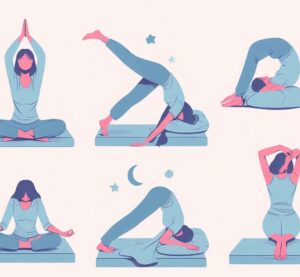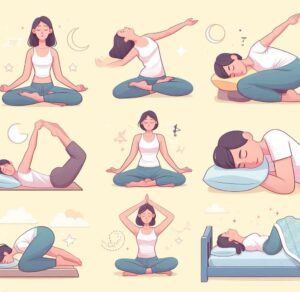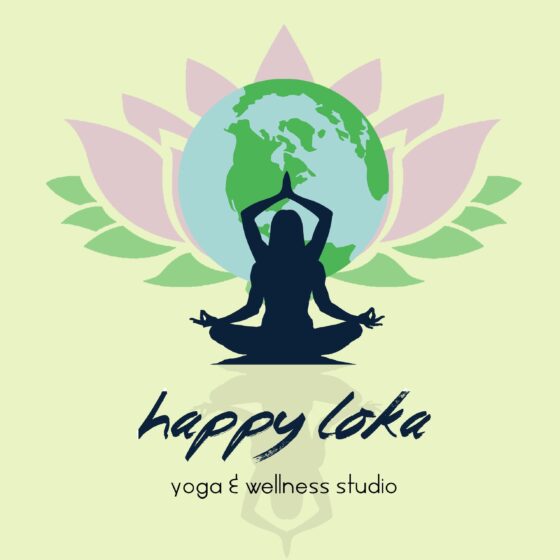Good sleep is no less important than a balanced diet or regular exercise. However, with the prevalence of insomnia and other sleep disorders, many struggle to secure a good night’s sleep, affecting their health, productivity, and overall quality of life. To help combat these issues, we delve into various poses and practices that improve sleep quality, offering a natural and holistic way to a peaceful slumber.
Importance of Quality Sleep

Quality sleep is as vital as air, water, and nutrition for the health of an individual. Despite the importance of sleep, it is often neglected or sacrificed, which can have short and long-term consequences on our health and overall functioning.
From a physical perspective, while we are asleep, the body is in an enhanced state of repair and renewal. It is during this phase that growth and repair of our cells occur. The body utilizes this downtime to clear away the day’s metabolic waste products. Furthermore, immune system function is boosted during sleep; proteins called cytokines are produced to protect against inflammation and infection. Sleep deficit not only weakens the immune response, leading to vulnerability to illnesses but also affects our heart health. Numerous studies have linked inadequate sleep with a higher risk of developing conditions like hypertension, heart attack, and stroke.
In terms of cognitive health, sufficient sleep plays a critical role in memory consolidation – the process by which short-term memories are transformed into long-lasting ones. Furthermore, sleep promotes focus, creativity, and problem-solving skills, essential traits that can significantly impact our daily productivity and performance.
Beyond this, sleep also has a profound influence on our emotional well-being. There exists a bidirectional relationship between sleep and mental health; poor sleep can lead to emotional problems such as anxiety and depression, and vice versa. The REM sleep phase, in particular, plays a vital role in mood regulation and emotional health.
What adds to the complexity of this issue is that sleep quality is not just about the quantity of sleep. The depth and stages of sleep, the time one goes to bed or wakes up, the amount of time it takes to fall asleep – all these aspects combine to influence the quality of one’s sleep.
Despite the clear importance of good sleep for our health and well-being, many struggle to achieve quality sleep. Causes range from lifestyle factors such as high stress, poor diet, and lack of regular physical activity to medical conditions like insomnia and sleep apnea. While it’s crucial to address these underlying issues, integrating habits that promote good sleep hygiene can be a helpful starting point.
Addressing sleep quality is an essential step in maintaining and optimizing our overall health and wellness. Achieving quality sleep is not a luxury but a necessity that requires our attention and action.
Understanding Sleep Disorders
Sleep disorders are among the most prevalent yet underdiagnosed health issues today. They manifest in various forms, the most common among them being insomnia and sleep apnea, transforming what should be a restful experience into a nightly struggle. Sleep disorders not only compromise sleep quality but also have profound long-term effects on overall health and well-being.
Insomnia, characterized by the inability to fall asleep or stay asleep, affects millions worldwide, leading to daytime fatigue and reduced energy levels. It may be a standalone disorder, or it could be symptomatic of other health conditions such as depression, anxiety, or chronic stress. Insomnia can also arise from lifestyle factors such as irregular sleep schedules, excessive screen time, or consumption of caffeine or alcohol.
Sleep apnea, on the other hand, is a potentially severe sleep disorder characterized by repeated interruptions in breathing during sleep. These pauses can last anywhere from a few seconds to minutes and may occur hundreds of times in a single night. This disrupted sleep leads to excessive daytime sleepiness and contributes to several health problems, including hypertension, heart disease, type 2 diabetes, and stroke.
Beyond these two common disorders, numerous other sleep conditions exist including restless leg syndrome, narcolepsy, and circadian rhythm disorders. Each disorder presents unique symptoms and impacts health differently, requiring tailored treatment approaches.
The first, crucial step in managing any sleep disorder is accurate recognition and diagnosis. This often involves a careful assessment of sleep patterns and may require a professional sleep study for more precise diagnosis. Treatment options depend on the specific disorder but generally involves a combination of medical treatments and lifestyle changes.
Medical treatments range from the use of medication in case of conditions like insomnia to use of devices like Continuous Positive Airway Pressure (CPAP) machines in sleep apnea. However, lifestyle changes form the cornerstone of managing any sleep disorder. These changes include maintaining a consistent sleep schedule, creating a sleep-friendly environment, reducing intake of caffeine and alcohol, and engaging in regular physical activity.
Effective management of sleep disorders not only improves sleep health but also enhances overall quality of life. Given the prevalence of these disorders and their serious health impacts, it is imperative that greater recognition is given to sleep health in overall healthcare management.
Yoga Poses to Improve Sleep

Yoga’s calming influence can be a powerful tool in your quest for quality sleep. By practicing the right postures, you can relax your mind and body, hence promoting a restful sleep. Let’s delve deeper into some of the yoga poses that can improve sleep.
The Legs-Up-The-Wall Pose, known as Viparita Karani in Sanskrit, is beneficial for those who spend a lot of time on their feet. By reversing the flow of gravity, this pose helps to rest the circulatory system and provides relief to the legs. It also stimulates relaxation by calming the nervous system, which can help prepare the body for a sound sleep.
Child’s Pose, or Balasana, is a restful pose that can help quiet the mind, easing stress and anxiety while gently stretching the back. It’s a pose of surrender, allowing you to breathe deeply and release any tension in your shoulders, back, and neck. Practicing this pose just before bed can foster a sense of calm needed for a good night’s sleep.
The Reclining Bound Angle Pose, also known as Supta Baddha Konasana, opens up the hips and chest, promoting relaxation. This pose is ideal for releasing tension in the hips, where many people tend to hold stress and anxiety. Breathe deeply and allow gravity to help you relax more deeply into the pose.
The Corpse Pose, Savasana, is typically the final pose in a yoga class and for a good reason. It fosters deep relaxation and allows you to tune in to your body, release tension and let go of any holding patterns. By consciously relaxing each part of the body, this pose can function like a full body relaxation and stress relief tool.
Remember, these poses can be modified based on your fitness level or any physical restrictions you may have. Ensure you perform these under the guidance of a trained yoga instructor, especially if you’re a beginner. Take slow, deep breaths as you hold each posture, and allow the tension to melt away. Regular practice of these poses can set the tone for better sleep habits in the long term.
Mindfulness Practices for Better Sleep
Mindfulness, or the practice of purposeful attention on the present moment without judgment, can have a profound effect on sleep. By anchoring the mind in the present, it reduces anxiety and stress, which are often major contributors to sleep disorders. Here are more detailed insights into the suggested mindfulness practices:
Progressive muscle relaxation is a two-step process that involves tensing and then relaxing different muscle groups in the body. This practice can help you become more aware of physical sensations and physiological responses to stress, such as muscle tension. To perform this exercise, you start by tensing a particular muscle group (e.g. your legs) for a few seconds and then slowly releasing the tension. This promotes relaxation and can reduce symptoms of conditions like insomnia, headaches, and digestive disorders.
Guided imagery is a mindfulness technique where you visualize calming situations or landscapes to reduce stress. This practice activates the relaxation response in your body, which can help decrease anxiety, improve mood, and promote restful sleep. Close your eyes and imagine a peaceful place or situation. Try to use all your senses in the visualization – notice the sounds, smells, and textures. Guided imagery can be practiced with the help of an instructor or using an audio guide.
Mindfulness meditation has been shown to significantly improve sleep quality by promoting relaxation. During mindfulness meditation, sit or lie comfortably and focus on different parts of your body starting with your toes all the way to your head, allowing any thoughts that arise to come and go without judgment. This practice, coupled with steady, deep breaths, enhances relaxation and can make it easier for you to fall asleep.
In addition to these practices, other mindfulness exercises like deep breathing and mindful eating can contribute to better sleep. Incorporating mindfulness practices into your bedtime routine is a beneficial strategy for improving sleep health. However, remember that consistency is key to success with mindfulness practices, as increasing awareness and improving sleep patterns take time.
Keep in mind that while these mindfulness practices can enhance sleep health, they should not replace professional medical advice for serious sleep problems. Always consult a healthcare provider if you’re enduring chronic sleep disturbances. It’s important to diagnose and treat any underlying issues that may be causing sleep disorders.
